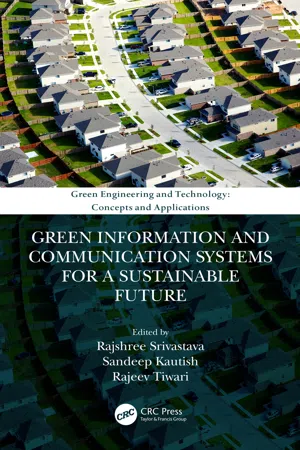![]()
1 A Review on Localization in Wireless Sensor Networks for Static and Mobile Applications
P. Singh and Nitin Mittal
Contents
1.1 Introduction
1.2 Related Work
1.2.1 Measurement Stage
1.2.2 Computational Stage
1.3 Classification of Localization Algorithms Available in WSNs
1.3.1 Localization Based on Hop Counts
1.3.2 Localization Based on Range-based and Range-free Techniques
1.3.3 Localization Based on Anchor-based and Anchor-free Techniques
1.3.4 Centralized and Distributed Localization
1.3.5 Static and Dynamic Localization
1.4 Localization Challenges
1.4.1 Energy of the node
1.4.2 Node Mobility
1.4.3 Transmission Range of Node
1.4.4 Localization Security
1.4.5 Localization Accuracy
1.4.6 Multi-Dimensional Localization
1.5 Determination of the 2-D and 3-D Coordinates of the Sensor Node
1.5.1 Determination of 2-D Coordinates
1.5.2 Determination of 3-D Coordinates
1.6 Applications
1.6.1 Services Based on Location
1.6.2 Health and Smart Living Applications
1.6.3 Robotics
1.6.4 Cellular Technology
1.7 Techniques Used to Improve Localization
1.7.1 Features of Optimization Techniques
1.7.1.1 Speed
1.7.1.2 Adaptability
1.7.1.3 Self-Organizing Capability
1.7.2 Genetic Algorithms (GA)
1.7.3 Particle Swarm Optimization (PSO)
1.7.4 Biogeography Based Optimization (BBO)
1.7.5 Firefly Algorithm
1.8 Criteria for Evaluation and Performance Parameters
1.8.1 Parameter Calculations on the Basis of Accuracy
1.8.2 Evaluation on the basis of cost metrics
1.9 Conclusions
Bibliography
1.1 Introduction
Wireless Sensor Networks (WSNs) nowadays are treated as an emerging technology, used for various applications like investigation of natural resources, tracking of static or dynamic targets, and in areas which it is not easy to access. A WSN consists of different types of sensors, which may be homogenous or heterogeneous [1]. The main challenges faced in WSNs, which degrade the performance, are computational, battery lifetime, security, and localization. The localization process is used in order to assign the coordinates to unknown target nodes deployed in the sensor field. Localization techniques can be used in WSNs for different applications, such as tracking of targets and location tracking of target nodes, etc. Many researchers have presented a variety of localization algorithms for improving important parameters, namely accuracy and efficiency. These techniques are mainly classified as either range-based or range-free localizations. Techniques, such as received signal strength indicator (RSSI) [2, 3], time of arrival (TOA) [4, 5], time difference of arrival (TDOA) [6], angle of arrival (AOA) [7, 8], are classified as range-based techniques. The range-based localization techniques are used for calculating the position of the node with range information (based on angle or distance). A huge cost is involved in implementing range-based methods but these methods are more effective at localizing the node effectively and for guaranteeing accurate node localization, as compared with range-free techniques. Some range-free techniques are classified as Centroid Method [9], DV-Hop [10], approximate point in triangulation (APIT) [11] and multidimensonal scaling (MDS) [12]. The benefit of using range-free methods is their ease of operation and low overheads.
In WSN, deployment is not always static. It may also be dynamic, but there are a few problems that need to be overcome, like the maintenance of connectivity, scope, and utilization of energy. The current trend in today’s WSNs put mobility in a positive light. Localization is the main requirement as well as the biggest challenge for dynamic WSNs. The accurate positions of the nodes placed in the sensor field must be known in order to identify the most-efficient route. The sensor nodes may also move from one point to another during their run-time, in the case of dynamic WSNs, but the position of sensor nodes is not going to vary from its original position in the case of static WSNs. Therefore, localization of sensor nodes in dynamic environments is of prime concern.
The rest of this chapter is organized as follows: Section 1.2 represents related work, Section 1.3 represents classification of localization algorithms, and Section 1.4 represents the challenges faced in localization. Section 1.5 represents determination of 2-D and 3-D coordinates, whereas Section 1.6 represents applications, and Section 1.7 represents the techniques used to improve localization. Finally, the conclusions of current research in this topic are represented in Section 1.9.
1.2 Related Work
To localize the sensor nodes, to enhance their various parameters in order to increase their lifetime and accuracy, localization plays an important role, becoming an essential requirement for multiple applications in the field of WSNs. The literature provides detailed explanations on various localization techniques available to perform this task. Mainly, localization algorithms consist of two stages: the first stage is used for measuring the distance and the second stage is used for solving the computations.
1.2.1 Measurement Stage
In this stage, the distance measured between different nodes is considered to be an important parameter, including angle measurement, and their own connectivity between them is considered. These techniques are classified into five main categories described as follows:
- 1. Strength of the received signal.
- 2. Arrival of the signal at a particular time or the difference in their arrival times.
- 3. Angle of arrival.
- 4. Proximity, based on the network connectivity.
- 5. Picture/scene analysis.
Each category will be described in some detail.
Received Signal Strength Indication (RSSI): This is used basically to observe the received incoming signal. On the arrival of the received signal, the task of RSSI is to calculate the distance on the basis of the incoming signal. Distance calculations are performed, using the received signal strength of the incoming signal [13, 14].
| | (1.1) |
| | (1.2) |
In Eq. (1.1) and (1.2), P trans an...
